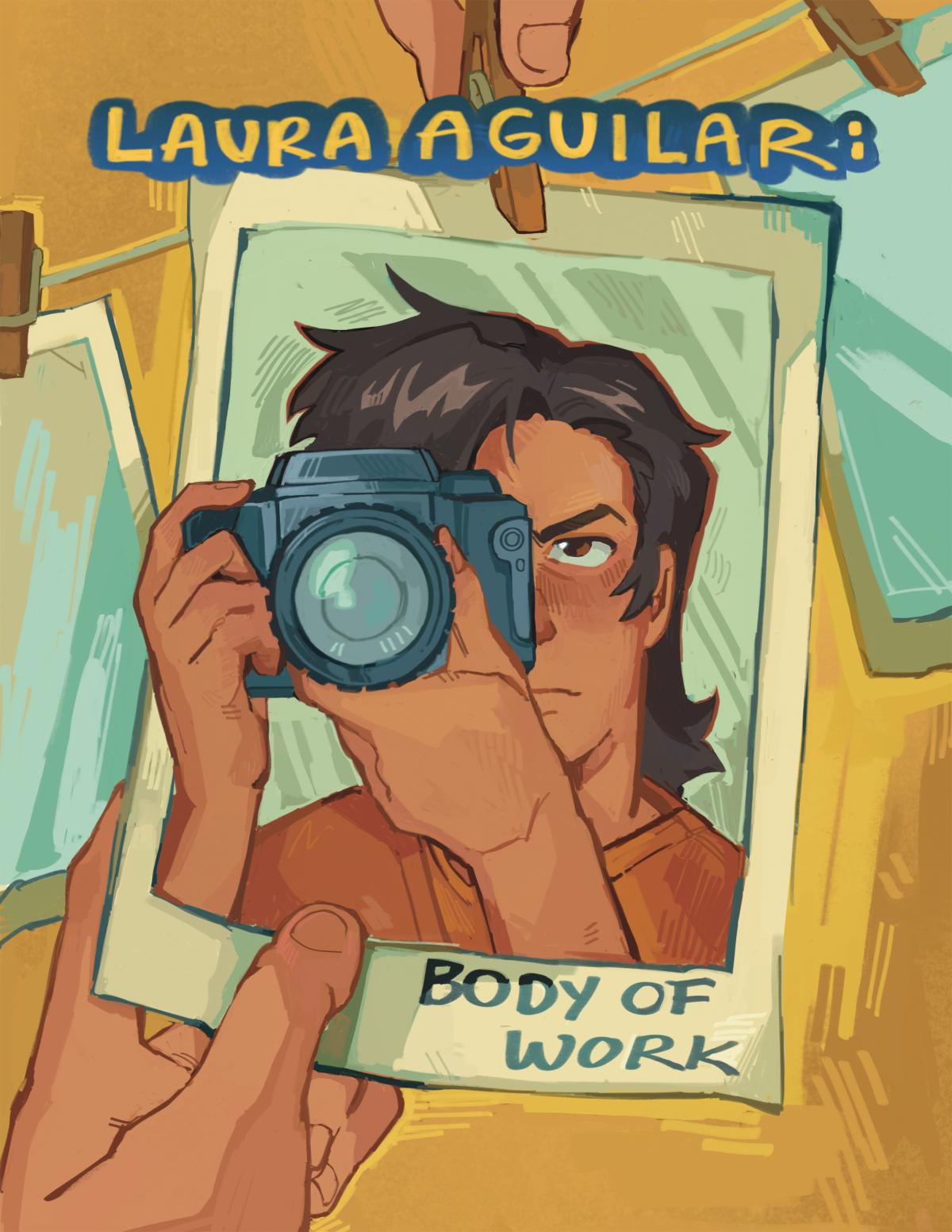
Laura Aguilar challenged accepted standards of beauty and documented her intersecting Latinx and LGBTQ+ communities, becoming one of the most influential Chicana photographers of her generation.
In the comic "Laura Aguilar: Body of Work," Tyler Tjaden, a student-illustrator at the Ringling College of Art and Design, tells the story of how Aguilar first discovered photography, embraced the medium, and subsequently turned the camera on herself to create powerful self-portraits. Her lens became both a way for her to capture and understand the world around her and a tool for self-reflection. As she said, “My photography has always provided me with an opportunity to open myself up and see the world around me. And most of all, photography makes me look within.”
Tyler’s palette, rich in muted greens and yellows, reminds me of a garden. It forms the perfect backdrop to tell the story, as we watch Aguilar age, grow, and bloom into an artist. The cover is a rich portrait of Aguilar behind the lens, which turns out to be a photo fresh from the dark room, still in the process of developing. Her expression is one of determination. We see one of her dark eyes, but the other is hidden behind the camera—in Tyler’s hands artist and camera merge into one.
Born in California in 1959 to parents of Mexican American, Irish American and Native descent, Aguilar suffered from auditory dyslexia which made it hard for her to communicate. One day, her older brother John brought home a camera, and Laura was instantly taken with it. Something clicked deep within her. Photography became her passion and a saving grace, a way to capture and understand the world around her and herself.
Exploring her identity as a gay Chicana woman, she began documenting the lesbian community as in her Latina Lesbian series (1986-1990) where each black-and-white portrait is accompanied by a handwritten statement from the sitter. She includes herself in the series with words that speak to her own identity. Sadly her journey of self-discovery was cut short; she passed away in 2018 at the age of 58. Overlooked by the mainstream art world during her lifetime, she received posthumous success with a critically acclaimed retrospective that was shown in Los Angeles, Miami, Chicago, and New York.
This comic is part of a series Drawn to Art: Tales of Inspiring Women Artists that illuminates the stories of women artists in the collection of the Smithsonian American Art Museum. Inspired by graphic novels, these short takes on artists’ lives were each drawn by a student-illustrator from the Ringling College of Art and Design.
We invite you to read the comic and share with your friends and young people in your life.



















